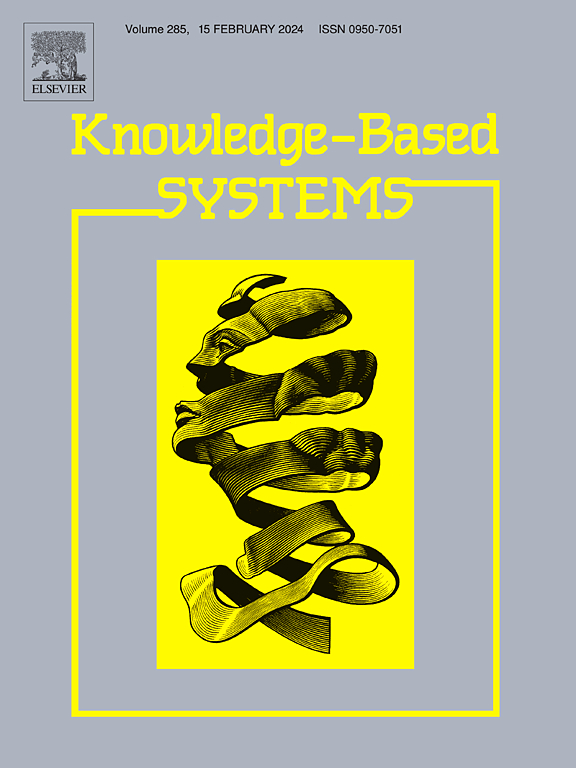一种用于宫颈癌诊断的自动轻量级递归核优化网络(LReKON)学习模型
IF 7.6
1区 计算机科学
Q1 COMPUTER SCIENCE, ARTIFICIAL INTELLIGENCE
引用次数: 0
摘要
子宫颈癌是世界上最普遍的长期疾病,对妇女的影响很大。子宫颈抹片检查的图像是一种广泛使用的宫颈癌筛查和诊断技术。即使存在受污染的样本,在检查巴氏涂片时,人为错误也可能导致假阴性结果。这一挑战已经被自动图像处理诊断所改变,这对于识别受宫颈癌影响的异常组织至关重要。因此,本研究旨在开发一种自动化、轻量级的宫颈癌诊断系统,即轻量级递归核优化网络(LReKON),以实现快速、准确的宫颈癌诊断。采用挤压激励实例分割网络(SEI-SN)技术对原始宫颈图像的异常区域进行了更精确的分割。一种称为基于最优超平面的核神经网络(OHyKN)的新算法用于根据相关类别确定分割的区域是健康的还是受癌症影响的。这项工作还采用了一种新的基于混合堆的扩散向量优化器(H2DVO)技术来提高分类器的训练和测试性能,并加快了预测过程。此外,考虑到许多因素,使用公开可用的基准数据集(包括Mendeley LBC和SIPaKMed巴氏涂片图像数据集)对所提出的LReKON模型的分割和分类性能进行了测试和验证。训练后的LReKON模型在宫颈癌诊断中的准确率为99.10%,精密度为99%,召回率为98.9%,f1评分为98.9%,推理时间极快,为0.28 s。SEI-SN分割模块的去除将准确率降低到95.15%,OHyKN分类模块的去除将准确率降低到96.25%,对性能的提升起着至关重要的作用。H2DVO优化步骤提高了效率,因为它的消除导致额外的推理时间为0.32 s,准确率为97.35%。此外,当去除SEI-SN、OHyKN和H2DVO三个分量时,准确率降至93.55%,定义了它们对分割、分类和优化的综合贡献。本文章由计算机程序翻译,如有差异,请以英文原文为准。
An automated and Lightweight Recursive Kernel Optimized Network (LReKON) learning model for cervical cancer diagnosis
Cervical cancer is the most prevalent long-term illnesses that can be highly affected women around the world. Images from Pap smears are a widely used technology for cervical cancer screening and diagnosis. Even when the contaminated sample is present, human error can lead to false-negative results when examining pap smears. This challenge has been revamped by automated image processing diagnostics, which is crucial in identifying abnormal tissues impacted by cervical cancer. Therefore, the proposed study aims to develop an automated and lightweight cervical cancer diagnosis system, known as, Lightweight Recursive Kernel Optimized Network (LReKON) for fast and accurate cervical cancer diagnosis. The aberrant region has been more accurately segmented from the raw cervical pictures using the Squeeze and Excitation Instance Segmentation Network (SEI-SN) technology. A novel algorithm termed Optimal Hyperplane based Kernel Neural Network (OHyKN) is used to determine the segmented region as either healthy or cancer-affected, depending on the relevant class. This work also employs a novel Hybrid Heap based Diffusion Vector Optimizer (H2DVO) technique to enhance the training and testing performance of the classifier and expedite the prediction process. Additionally, the proposed LReKON model's segmentation and classification performance is tested and verified using publicly available benchmarking datasets, including the Mendeley LBC and the SIPaKMed Pap smear image dataset, taking into account a number of factors. The trained LReKON model is best in cervical cancer diagnosis with 99.10 % accuracy, 99 % precision, 98.9 % recall, and 98.9 % F1-score and with an extremely fast inference time of 0.28 s. The SEI-SN segmentation module plays a crucial role in performance enhancement as its removal reduces accuracy to 95.15 %, and the removal of the OHyKN classification module reduces accuracy to 96.25 %. The H2DVO optimization step improves efficiency since its elimination results in an additional inference time of 0.32 s and accuracy of 97.35 %. Moreover, when the three components SEI-SN, OHyKN, and H2DVO are eliminated, accuracy reduces to 93.55 %, defining their combined contribution to segmentation, classification, and optimization.
求助全文
通过发布文献求助,成功后即可免费获取论文全文。
去求助
来源期刊

Knowledge-Based Systems
工程技术-计算机:人工智能
CiteScore
14.80
自引率
12.50%
发文量
1245
审稿时长
7.8 months
期刊介绍:
Knowledge-Based Systems, an international and interdisciplinary journal in artificial intelligence, publishes original, innovative, and creative research results in the field. It focuses on knowledge-based and other artificial intelligence techniques-based systems. The journal aims to support human prediction and decision-making through data science and computation techniques, provide a balanced coverage of theory and practical study, and encourage the development and implementation of knowledge-based intelligence models, methods, systems, and software tools. Applications in business, government, education, engineering, and healthcare are emphasized.
 求助内容:
求助内容: 应助结果提醒方式:
应助结果提醒方式:


